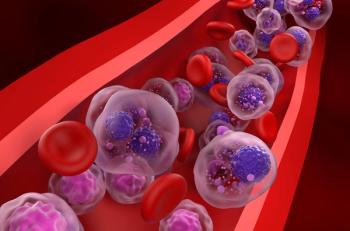
Study: Low-Grade Serous Ovarian Cancer Associated with Poor Long-Term Outcome
The objective of the study was to examine a large clinical dataset of LGSC through the Ovarian Cancer Association Consortium, with the primary goal of identifying factors that affect survival.
Despite histologic low-grade features, low-grade serous ovarian cancer (LGSC) is associated with a poor long-term outcome. The stage at presentation and residual disease following surgical cytoreduction represent significant predictors of progression-free survival (PFS) and overall survival (OS), according to a study presented via the virtual Society of Gynecologic Oncology 2020 Annual Meeting on Women's Cancer.
The objective of the study was to examine a large clinical dataset of LGSC through the Ovarian Cancer Association Consortium, with the primary goal of identifying factors that affect survival.
The researchers performed a clinical and genomic, retrospective, multicenter analysis of women with LGSC, with cases included in both clinical and genomic data from the OncoArray platform. PFS and OS were estimated using the Kaplan-Meier method, and 47 relevant single-nucleotide polymorphisms (SNP) were selected and used for further analysis.
Out of the 380 patients who were involved in the study, 20.5% were stage 1, 7.9% were stage 2, 61.1% were stage 3, 6.1% were stage 4, and 4.5% were at an unknown stage. The median age at diagnosis was 54 years, and the ethnicity was known in 324 of the patients. In surgical outcomes, 60% had optimal cytoreduction with no visible residual disease, 26.3% had optimal cytoreduction with residual disease, and 13.8% had suboptimal cytoreduction.
Out of the 191 patients who had a known chemotherapy status, 94.2% received primary chemotherapy. The median follow-up was 60.0 months, whereas the median OS was 105.8 months. The 5- and 10- year overall survival rates were 63.5% and 45.5%, respectively.
Information on disease progression was available for 212 patients, of whom 60.4% experienced disease progression. Disease stage and surgical cytoreduction were significantly associated with OS and PFS. The Rs17161747 G>C variant was found in 12.0% of patients and was associated with a lower PFS.
REFERENCE
Wohlmuth C, Tone A, Daghrach A, et al. Risk stratification using hotspot genotyping in low-grade serous ovarian cancer. SGO 2020. https://sgo.confex.com/sgo/2020/meetingapp.cgi/Paper/15764. Presented March 29, 2020. Accessed June 22, 2020.
Newsletter
Stay informed on drug updates, treatment guidelines, and pharmacy practice trends—subscribe to Pharmacy Times for weekly clinical insights.










































































































































































































